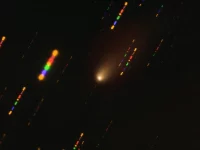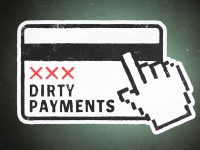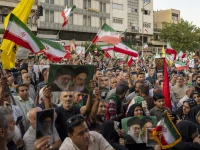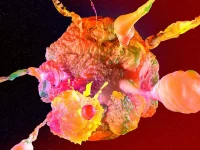Ferguson. Decision on race in America is in.

WORRYING. It turned out we didn’t need to know what the verdict was in the Michael Brown case in Ferguson, Missouri, to confront some ugly facts and emotions.
In the afternoon came word that the grand jury considering the fatal police shooting of the 18-year-old had reached a decision. The cable news channels began to roll out talking heads, and show video of Ferguson. They pictured the streets where nothing had been announced, and shared learned analysis of the big thing that hadn’t happened yet.
And then the preparations for potential violence began in Ferguson, and the speeches from the governor and other politicians, and the worrying of Americans who remember past riots, and the worrying of other (or the same) Americans who remember black men gunned down and cops uncharged.
As I write this it is nearly 8 p.m. Eastern Standard Time, meaning the announcement of the decision is about an hour away. But I don’t think we’ll know much more after the announcement, because we know so much now.
We know we are a nation with a nearly 400-year history of racial strife. We know each of these racially charged incidents, those that involve cops and those that don’t, from Rodney King to Trayvon Martin to Abner Louima to Michael Brown, take their place on the timeline of American race relations.
Brown was shot and killed by police officer Darren Wilson on Aug. 9. The shooting brought on huge protests and the wildly militaristic overreaction to the protests by the cops shocked the nation.
So there is a grand jury. And deliberations. And the politicization that always accompanies such situations.
It seems like we’re not getting anywhere with race relations anymore. It seems like progress has stopped. It seems like every time something like this happens so many people pick sides based on who looks more like them, who earns more like them, who lives more like them or talks more like them.
It will be hard to judge the grand jury decision once it is released. I won’t have heard the evidence. That’s true of everyone else, too, but many will judge the decision as right or wrong, instinctively, the minute it is announced.
And there may be violence. And there may not. But in the hours building up to the announcement, as we watched the news and worried and waited and discussed it all on Twitter and Facebook and, in many cases, took our pre-assigned and pre-decided sides without a whit of information, I felt I was learning quite a bit.
We are a terrified nation, scared of “the other.” We are an angry nation, sure that “they” are getting away with something. We are a frustrated nation, feeling unheard and convinced that the other side always gets the megaphone.
We are a devastatingly divided nation, because of our history, our behavior and our prejudices. Regardless of the decision. Regardless of the response to the decision. (Anonimous)
FACTS
Ferguson, a majority black suburb, has 53 police officers — three of whom are black.
Most of the residents and protesters who took to the streets following Brown’s death maintained that the teen was killed « because he was black, » and many said they regularly experienced racism from Ferguson police. Residents with whom we spoke reported feeling abused and humiliated, and often said they were made to feel « like animals. »
On September 4, the DOJ announced the launch of a civil rights investigation of the Ferguson police department. DOJ officials said that the probe — a separate one had already been launched to investigate Brown’s death specifically — will examine patterns of stops and arrests, the use of force, police training, and the treatment of prisoners held in Ferguson’s jail to determine whether discrimination regularly played a role.
Missouri Governor Jay Nixon tasked the state’s Highway Patrol division with control of the protests — a decision widely seen as an attempt to calm down angry residents, but one that was resented by some local law enforcement. Ferguson police, along with police from other departments, remained on the streets.
Most — though not all — of the officers VICE News observed in Ferguson appeared disinterested in differentiating between hostile protesters, peaceful protestors, media, and residents caught in the middle of the confrontations. As police set up roadblocks around the suburb, officers regularly yelled at residents who asked to be let through to reach their own homes, and refused to let them pass.
More than once, VICE News witnessed police officers drawing their guns on peaceful people, including journalists. Ferguson police officers who brandish their weapons in this manner would be in violation of the department’s code of conduct.
* * *
During the protests, police officers detained several reporters. Officers refused to disclose their own names when asked, nor did they disclose the reasons they’d detained the journalists, who were sometimes held for hours.
However, according to the department’s own guidelines for interacting with the press, the media is entitled to receive details about the identity of the arresting and investigating officers as long as it doesn’t comprise undercover probes.
Additionally, police officers are advised to provide the media with information surrounding « the facts of the arrest and circumstances immediately surrounding it, including time and location; resistance, if any; pursuit; and the use or possession of weapons. »
In Ferguson, journalists struggled to obtain information from the Ferguson police officers — and other law enforcement — who were present during the protests. This, even though Ferguson’s guidelines state that at « any planned police operation which is likely to attract news media attention » a designated officer will « act as a liaison with any news media reporters » and disclose certain information.
« Media personnel will not be barred from filming or photographing a scene as long as this activity is outside the secure zone and they do not interfere with the conduct of the investigation, or other police operations, » the policy states. « If practical, the ranking officer at a crime or incident scene may give media members guided access to the scene, except when the incident is on private property and the owner requests the media to leave. »
After Nixon announced a temporary state of emergency and curfew on August 16, members of the media were told they would be allowed outside between midnight and 5am — when the curfew was in effect — as long as they remained in a designated « media zone » far from the center of the protests. On at least one occasion, police ordered reporters to leave the media zone area as well. It was not clear how the state of emergency affected standard police regulations, and officers on the ground did not respond to our questions about it.
According to those regulations, Ferguson police officers are required to wear « body-worn camera recorders… to record contacts with the general public. » But the department declined to turn over to VICE News copies of its recordings from the protests in response to our open records request.
* * *
The department’s policy dictates that lethal force may be used only if the officer believes that his life or the lives of others are in danger, and only if attempts at capture have been exhausted.
« A police officer must weigh the necessity of apprehension against the apparent threat to the safety of all involved, and exhaust every alternative means of apprehension known to be available at the time before resorting to the use of lethal force, » says the July 6, 2010 general order.
The directive also states that « if feasible, » the officer shall issue a « verbal warning » before using lethal force. Additionally, the use of lethal force is permitted against a fleeing suspect only if there is a « substantial risk » that the person will cause « death or serious physical injury if apprehension is delayed. »
After an officer fires a weapon causing injury or death, the Bureau of Investigations is supposed to be notified, and an internal investigation is then supposed to be launched. The guidelines also say:
The Communications Dispatcher shall be notified immediately either by the officer involved in the incident or the first police officer on the scene.
The watch commander shall respond to the scene and be responsible for the command and protection of the scene until the arrival of the Bureau of Investigations investigator(s). He shall assist, as necessary, in the investigation of the incident and arrange to have a police officer, not involved, prepare the original report.
The watch commander will complete the Use of Force Report F-080 and forward it through the chain of command to the Chief.
The Chief of Police will direct the Professional Standards Officer to conduct an administrative review of all incidents where a gunshot wound is inflicted.
But city officials responding to media requests for the « use of force » report filed after Brown’s death said that such a report did not exist — a clear violation of the department’s own guidelines as well as of established standards for police departments nationwide.
While accounts of the encounter between Brown and Wilson differ, the autopsy revealed that Brown was struck by at least six bullets, including two that hit him in the head.
During the weeks-long protests in the city after Brown’s death, Ferguson police officers were accused of indiscriminately using tear gas and wooden pellets to subdue protesters. The use of force policy does say that « less lethal » forms of force, such as pepper spray and « chemical agents, » can be used « at the discretion of a supervisory officer when warranted in matters of crowd control » — but « only after all other reasonable efforts to control the situation have failed. »
Different police departments fired tear gas dozens of times in the first weeks of the protests — usually after ordering protesters off the streets through loudspeakers.
On at least one occasion, police responding to protesters ordered people to disperse more than two hours before a curfew imposed by officials during the state of emergency. Those who were outside their homes — including, reportedly, children — found themselves caught in the middle of the confrontations.
« Whenever chemical agents are used, the supervisory officer who authorized usage will send a Use of Force form to the Chief of Police listing the details of the incident and justification for use of the chemical agent, » the policy guidance says.
However, it’s unclear if incident reports exist. Police officials would not respond to VICE News’ requests for comment. (ViceNews)










